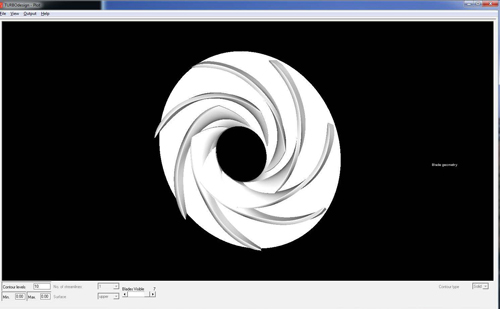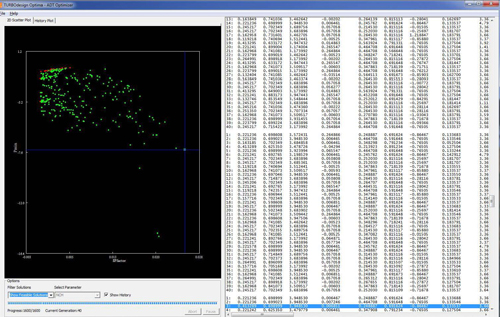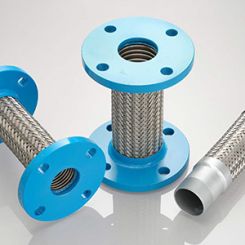Carver Pump (Carver) in Muscatine, Iowa, has been a centrifugal pump manufacturer since 1938, building pumps to demanding engineering specifications and military standards. Its product line includes horizontal and vertical end-suction, multistage, axial split case, self-priming, API and solids-handling pumps, all made to provide long life with superior, straightforward designs. From an applications standpoint, Carver has traditionally built pumps for water, oil and chemical applications for both the public and private sectors.
The company, which is International Organization for Standardization (ISO) 9001:2008 certified, continually searches for and implements the latest design, engineering and manufacturing technologies. Recently, Carver implemented a design technology breakthrough—a three-dimensional (3D) inverse design method. This method is a unique aerodynamic and hydrodynamic 3D design package for all types of turbomachinery blades such as pumps, compressors, fans, turbines and torque converters.
 |
| Carver's newly designed impeller |
The 3D inverse design approach enables users to describe loading criteria then output a blade design based on those criteria, which is the opposite of how most computer-aided turbomachinery design software systems function. By using the 3D inverse design method, Carver cut design times while increasing its pump product line efficiencies and its range of possible product offerings.
Challenge
Carver wanted to make its products more competitive by expanding its RS multistage ring section pump offerings with increased efficiencies. Carver’s RS series was designed for moderate- to high-pressure pumping and is available in five basic sizes with overall performance to 1,000 horsepower. The RS series is offered with American National Standards Institute (ANSI) 300-pound inlet flanges and ANSI 600- or 900-pound discharge flanges, depending on the pressures and number of stages involved. Hydraulic performance extends to 1,400 gallons per minute and 3,400 feet total dynamic head.
“Carver Pump used the ADT software to speed development of impeller, diffuser and return vane sets for expanding its family of RS multistage ring section pumps,” says Mark Post, chief operating officer for Carver Pump. “Exceptional efficiency, good suction performance and stable off-design performance were required for this family of pumps.”
Solution
Carver had used the company’s computer-aided design software for many years. Initially, it took just three months to learn how to quickly set up and run new studies and to understand how to achieve the desired results. From an operations standpoint, the design software was cost effective because it ran well on Carver’s existing computer systems that already were running a different computational fluid dynamics (CFD) software system. Carver’s experience indicated that the 3D inverse method would be a useful tool for quickly developing and evaluating various new design approaches. The availability of optimization module that could be added to the software made it possible to identify optimal design options and make the best decisions for trading off performance features, such as efficiency and suction.
Prior to using the 3D inverse method, designs were developed using another software package that did not use this approach. Instead, the method was to develop a preliminary meridional profile and blades based on rough calculations and empirical data, perform CFD analysis and adjust the geometry until satisfactory results were obtained. The recursive nature of that design process and the amount of time required to run a CFD analysis limited Carver’s opportunities to fully explore all design options for most applications.
Post’s team used the 3D inverse method with the optimization module exclusively in its RS multistage ring section pump designs. This method computed the 3D blade geometry for a given distribution of blade loading and blade normal thickness, therefore specifying blade loading that gives direct control of the 3D pressure distribution and the span-wise work distribution. It also allowed for direct control of the 3D flow field and allowed designers to explore a large part of design space, efficiently leading to breakthrough designs that resulted in significant performance improvement, as well as a reduction in design and development times.

Screenshot of the design work on the RS multistage ring section
Used in conjunction with the software, the optimization module is a fully-integrated automatic optimization platform for the design of turbomachinery blades subject to multipoint and multi-objective design objectives. The program supports the design of experiments (DoE), response surface models (RSM) and multi-objective genetic algorithm (MOGA) optimization.
For the development of the RS multistage ring section pump designs, the Carver team first decided on a good, known meridional shape and blade loading. To make the choice of initial loading distribution, Carver’s team had the choice of using its own experiences or using guidelines provided in the software’s application manual.
Next, they specified the stacking condition in the software system and then used the system to compute the blade shape. The program allowed for graphical monitoring of the blade shape during the computation process. The last step for the 3D inverse method was to run it through the postprocessor for information on the blade shape and 3D inviscid flow field. It was also possible to compare different blade geometries in detail in terms of wrap angle, section shape, blade angle, thickness and meridional shape.
Carver used the optimization module to fine tune the meridional shape and blade loading by optimizing efficiency and suction performance. Then its engineers again used the system’s post processor with blade loading, velocity and pressure plots for evaluating the design.
Optimum blade loading for a particular application is general and can be easily applied. Afterward, the results of design optimization studies can be implemented in a design database to be transferred between different design teams or to help train new designers.
“We also used TD1 [TURBOdesign1] to compare features to weigh the pros and cons of competing designs,” Post says. “The major benefits to us were the ability to maximize efficiency and suction performance for the intended purpose, as well as the ability to use TD1 as a training tool by exploring a wide range of design options quickly with a significant reduction in development time for routine designs.”
Return on Investment
The main software program does not rely on empiricism. Therefore, it is easy to train new designers who can become productive quickly. With this system, typical performance improvements up to two to three percentage points can be obtained over other design systems.
According to Post, by using the system and the optimization module, Carver also saved time. The company’s original design method took approximately two months of engineering time. With the 3D inverse method, Carver cut the RS multistage ring section pump product development time to four or five weeks. Using the software system eliminated two weeks of design time, and using the optimization module cut out an additional one to two weeks. More importantly, the company has since increased sales through improved design efficiency as each design that saves a few percentage points of efficiency over an older design method makes Carver’s product offerings more competitive.
“A complement to this is that we can pursue more business that pushes the envelope because we know we can consistently develop reliable hydraulic designs,” said Post. “In essence, the big gain for Carver Pump is potential revenue growth through new products.”

